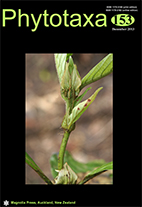Abstract
The genus Premna Linnaeus (1771: 587) contains about 200 species and is distributed in Old World tropics and subtropics with 46 species in China (Chen & Gilbert 1994). After being transferred from the Verbenaceae to the Lamiaceae, the genus becomes one of the biggest genera of the mint family (Harley et al. 2004), and now ranks among the more taxonomically difficult and complicated genera of Lamiaceae. Premna laevigata C. Y. Wu (1977: 440) was described from collections from Mengla County, Yunnan Province, China. However, the name was not validly published in the original description (Wu 1977) because three collections were simultaneously designated as types (i.e. H.T.Tsai 59-11098 was assigned as the flowering type, and S.J.Pei 59-11239 and, 59-13345 as fruiting types) which is contrary to articles 40.1 and 40.2 of the International Code of Nomenclature for Algae, Fungi and Plants (ICN) (McNeill et al. 2012). In the Catalogue of type specimens (Cormophyta) in the herbaria of China (Jin 1994), this name was validated by designating H. T. Tsai 59-11098 as the holotype. Unfortunately, it is still an illegitimate name according article 53.1 of the ICN because the name is a later homonym of P. laevigata Miquel (1858: 895), based on material from Indonesia (Sumatra). However this was not realised in either Flora Reipublicae Popularis Sinicae (Chen 1982), or in Flora of China (Chen & Gilbert 1994). After checking the type material of both names, it is concluded that the two homonyms apply to two totally unrelated taxa. Therefore, the Chinese species requires a new name which is proposed below.

